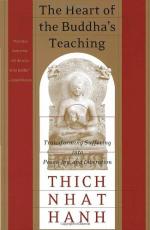
|
| Name: _________________________ | Period: ___________________ |
This test consists of 15 multiple choice questions and 5 short answer questions.
Multiple Choice Questions
1. How can we apply the teachings?
(a) Through our actions.
(b) Through our words.
(c) Through our meditation.
(d) Through our thoughts.
2. When we recognize suffering and look deeply into it, we are practicing what?
(a) Right View, Right Thinking, Right Mindfulness and Right Concentration.
(b) Right Concentration, Right Contraction, Right Mindfulness, and Right Compassion.
(c) Right Diligence, Right Action, Right Thoughtfulness, and Right View.
(d) Right Thinking, Right Thoughtfulness, Right Compassion, and Right Concentration.
3. Like the relationship of a plant and the earth, when we take refuge in Buddha, ______________________.
(a) Buddha takes refuge in us.
(b) Buddha remembers us.
(c) Buddha takes pride in us.
(d) Buddha encourages us to take refuge in the self.
4. We will see layers of causes and conditions, and can now stop ingesting the nutriments causing our suffering by practicing what as a guide?
(a) Right Concentration, Right View, Right Livelihood and Right Action.
(b) Right View, Right Thinking, Right Speech, and Right Livelihood.
(c) Right Livelihood, Mindfulness, Right Thinking, and Right View.
(d) Right Speech, Right Action and Right Livelihood, with Mindfulness Training.
5. Each element of the Noble Eightfold Path is contained where?
(a) In small groups.
(b) In categories.
(c) Individually.
(d) Within the others.
6. Hanh suggests meditating mindfully on what parts of the body?
(a) Each part.
(b) The organs.
(c) The inner parts.
(d) The outer parts.
7. What does nonself say?
(a) No one is connected to anyone else.
(b) Everything is connected with everything else.
(c) Nothing is connecte to anything else.
(d) Things are not connected to beings.
8. Energy is the result of what?
(a) Love.
(b) Hope.
(c) Feeling meaning in our lives.
(d) Compassion.
9. The third condition requires what?
(a) Someone or some thing.
(b) Creative force, concurrent condition, seed condition of the same kind, associated condition, universal condition and ripening condition.
(c) Consistent and continuous practice.
(d) Development.
10. Does Buddhism ask for blind faith?
(a) Yes, somewhat.
(b) Yes, absolutely.
(c) No.
(d) Yes, often.
11. What is the second of the five mindfulness trainings?
(a) Perfection of the five mindfulness trainings.
(b) Prevent exploitation by humans of nature and others, and generosity.
(c) To protect children and adults from sexual abuse and preserve happiness.
(d) Protection of the lives of humans, animals and nature.
12. "Mindfulness always arises in the context of a relationship with ______________________."
(a) Other people.
(b) Ourselves, other people or things.
(c) Ourselves.
(d) Things.
13. What is vedana?
(a) Feelings.
(b) Intelligence.
(c) Thought.
(d) Form.
14. What is the foundation of Buddhism?
(a) The Twelve Links of Interdependent Co-Arising.
(b) Enlightenment.
(c) Suffering.
(d) The Four Noble Truths.
15. The ____________ Dharma seals of Buddha's teaching are: impermanence, nonself and nirvana.
(a) Six.
(b) Four.
(c) Five.
(d) Three.
Short Answer Questions
1. Relying on the Buddha within are we, ourselves, the Buddha?
2. Our true home, and paradise, are where?
3. The Five Faculties are powers that can help us do what?
4. What does form include?
5. What is the second of the Five Faculties?
|
This section contains 488 words (approx. 2 pages at 300 words per page) |

|




